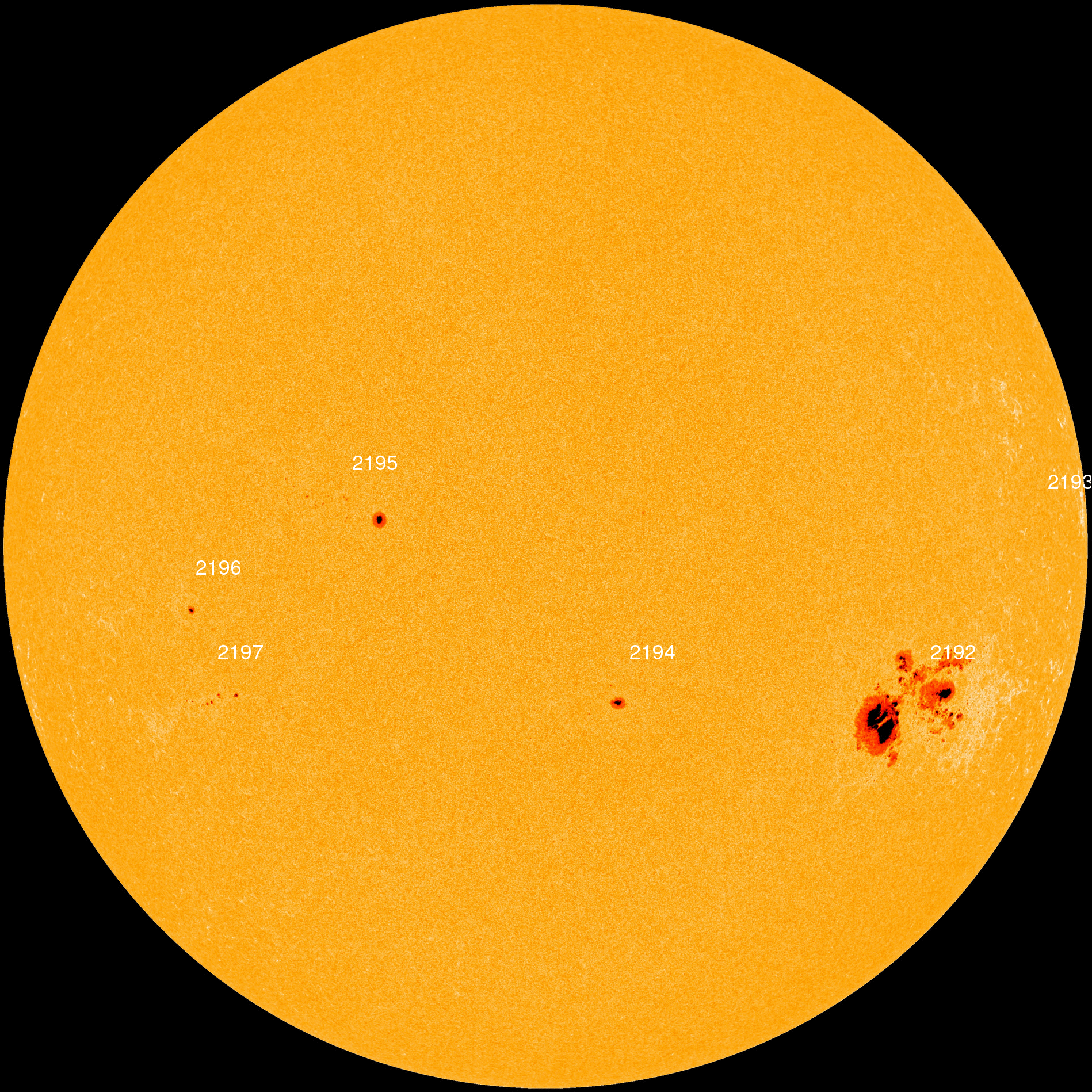Monster Sunspot Cluster Has Earth In Its Sights
October 27, 2014
The largest cluster of sunspots in 25 years began hurling its sixth major solar flare in one week at Earth this morning, according to the Space Weather Prediction Center (SWPC), a division of the National Oceanic and Atmospheric Administration. And the cluster shows no signs of slowing down. At this point, it is wider than Jupiter, the largest planet in the solar system, and it is still growing. The cluster is so large, in fact, that it can be seen with the unaided eye when clouds or fog dim the sun. (Warming: Never stare directly at the sun. Even during an eclipse, the sun’s direct rays may damage your eyes.) The sunspot cluster, named AR2192, has caused radio blackouts and other communication disturbances on regions of Earth as they rotate to face the sun.
Sunspots are dark areas on the surface of the sun with high concentrations of magnetic energy. Sunspots appear dark because they are cooler than the rest of the surface. Relatively cooler, that is—only about 7,000 °F (4,000 °C), compared with 11,000 °F (6,000 °C). A solar flare erupts after the twisted magnetic fields of a sunspot suddenly “snap,” releasing billions of tons of solar plasma, a form of matter composed of electrically charged particles. The radiation from the explosion is hurled into space at the speed of light.

Sunspot cluster AR2192 (lower right) is 777,000 miles (125,000 kilometers) wide, nearly as wide as the planet Jupiter. (SDO/HMI)
Luckily, the menacing monster has not—so far—erupted a coronal mass ejection (CME), a ball of plasma larger than a flare. CME’s release enough energy to supply all of Earth’s commercial energy needs for more than 12,000 years. The magnetic storms released by CME’s could seriously disrupt radio and satellite communications, including GPS signals and airline communications, and electric power transmission. Such storms also produce astonishing displays of northern lights that may appear much farther south than normal.
Additional World Book articles:


